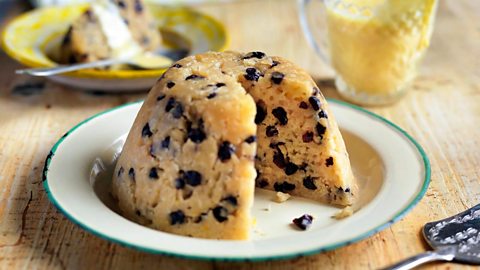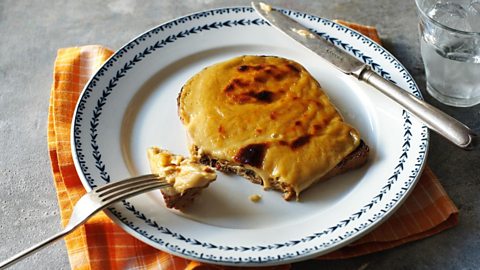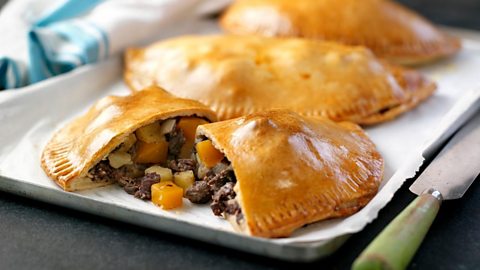Are these classic British favourites in danger of becoming extinct?
Some classic British dishes may be moving from our cookbooks to the history books, as Brits no longer recognise them, according to research. More than a quarter of Brits have never eaten toad in the hole, with nearly one in five thinking itтАЩs made up for fictional purposes, the research reveals. And some nursery puds may be on the way out, with 18 percent believing the old school dinner favourite spotted dick is imaginary.
Eton mess may not be our favourite summer pud for long, with 13 percent believing itтАЩs not actually a dish. If you enjoy bangers and mash or a scotch egg, look away now as 11 percent donтАЩt believe theyтАЩre real. And black pudding suffers a similar fate, with 10 percent thinking itтАЩs a fictional ingredient. WhatтАЩs going on?
Our tastes have changed
Over a third of the 2000 respondents to the survey from Mortar Research, commissioned by Aldi, hadnтАЩt tried black pudding, a British food traditionally found in a Full English breakfast. Black pudding is a blend of onions, pork fat, oatmeal, flavourings, and blood (usually from a pig). It тАЬstems from frugality and the desire of a butcher to use up every part of the animal,тАЭ says food historian Seren Charrington-Hollins, but some people might be put off by the blood it contains, she adds. Other types of offal may suffer from the same fate. тАЬIf you told people in the 1970s they werenтАЩt regularly going to be eating tripe and chips in 2021, a lot of them probably wouldnтАЩt have believed you, as it was one of those staples,тАЭ she says.
Many traditional recipes have changed over time. Toad in the hole was тАЬoriginally a small piece of beef in batter,тАЭ says Charrington-Hollins, whereas now we know it as sausage in batter тАУ a change that has made it more convenient to make. Perhaps it would have fallen out of favour completely without the change.
The original recipe for Christmas mince pies can be traced to the 13th century, when European crusaders imported Middle Eastern recipes. The traditional pie was made from minced mutton as well as dried fruits and spices. Over the centuries, the meat changed to lamb, veal, tongue, tripe and minced beef, before it was in the late Victorian era, when the pies became much sweeter. WeтАЩre still evolving тАШminceтАЩ pies, for instance by topping them with icing.
Classic dishes created to use leftovers
Some of the dishes and ingredients respondents didnтАЩt recognise were developed in order to use every scrap of food. 30 percent of the people questioned hadnтАЩt tried bubble and squeak тАУ a dish that has been eaten in Britain since at least the 18th century, and that was popular partly because it used up тАЬall those bits of food, perhaps out of necessity,тАЭ according to Charrington-Hollins. Similarly, 33 percent of respondents hadnтАЩt tried Eton mess, which is a great way to use up a glut of strawberries.
Some traditional frugal ingredients may have lost their popularity too. Only 46 percent of people asked could identify pease pudding, an English classic accompaniment to meat, made with yellow split peas, water and spices, often cooked with bacon or ham.
Is there a decline in regional eating?
Historically, people would have been more likely to eat what was available close by. Some dishes established themselves in their region, for instance stargazy pie (a pie made of baked pilchards, eggs and potatoes, covered with a pastry crust) in Cornwall тАУ which was only recognised by 23 percent of those questioned.
But it seems some dishes are still well known among those who live where they were invented: the Scottish dish neeps and tatties was recognised by just under half of those questioned, rising to four-fifths of people in Scotland and dropping to just a quarter in London.
Have we forgotten how to cook?
Many dishes, such as pies and puddings, are available in the shops ready made, giving more people a chance to try them. This might help explain the popularity of some traditional treats that are sold like this, such as the Bakewell tart, which was first created in 1820 and was BritainтАЩs favourite baked treat in 2015.
For those who are unconfident about cooking, food historian Charrington-Hollins encourages us to discover тАЬhow quick and easy some of these recipes are to prepareтАЭ, naming toad in the hole, semolina pudding and rice pudding as examples of simple classic British dishes.
Well-loved classics
Cornish pasties are still well loved, with of people in the UK saying they are familiar with them. Pasties are believed to have been the portable meals of Cornish miners. The thick crust edge may have been developed so the miners could hold onto the pasties with dirty hands and then discard the crust.
Our love for British food may be strong, but тАЬwe need to embrace these [lesser-known] traditional British recipes before we lose them,тАЭ says Charrington-Hollins, adding тАЬif you donтАЩt pass recipes down, they get lost, but at the same time if recipes donтАЩt adapt and change, they also die out.тАЭ
This article was first published on 29 September 2021.




